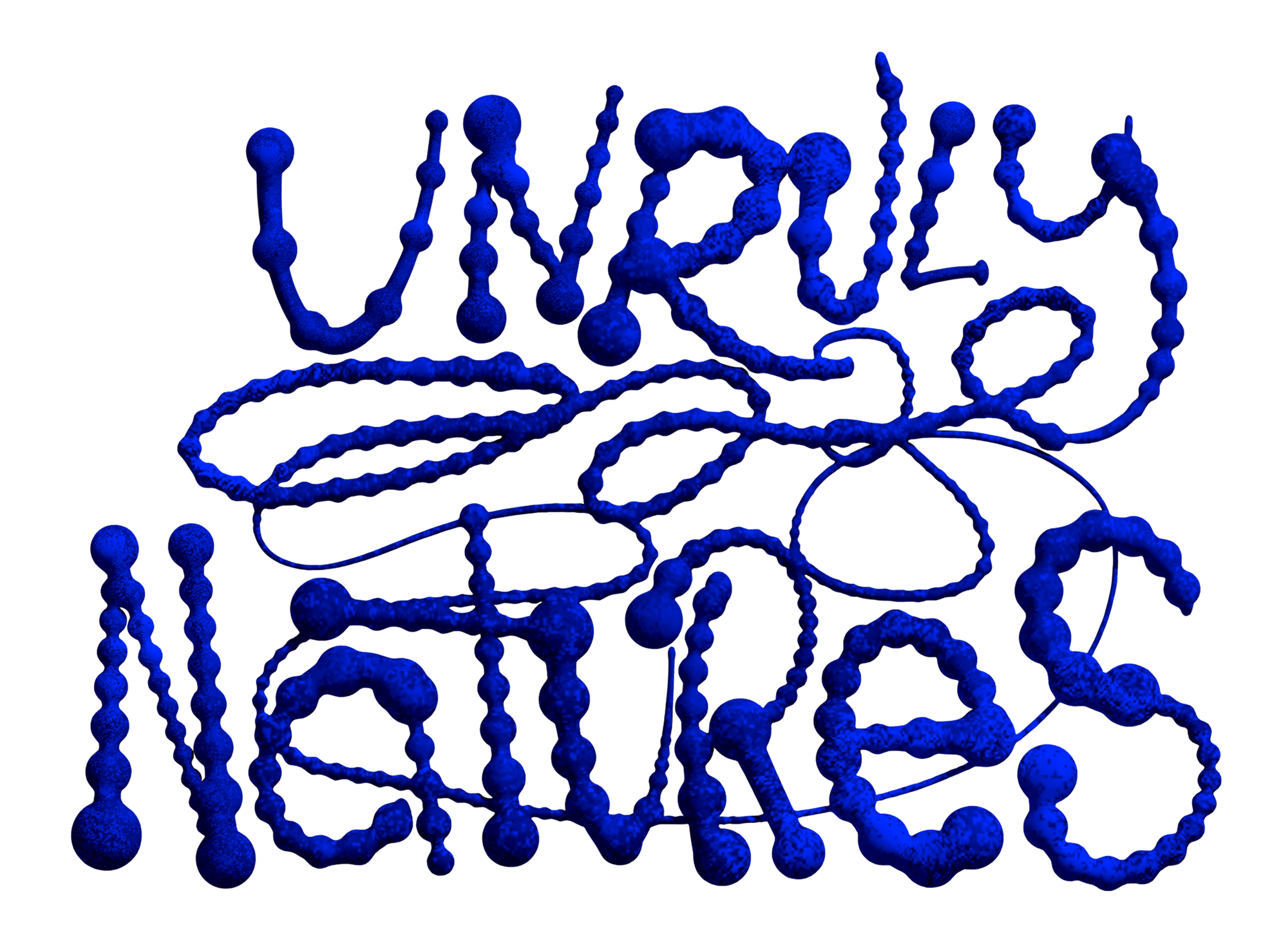︎
Field Notes September 23th 2022
Text and Photographs by Offshore Studio
(Isabel Seiffert, Christoph Miler)
Walking Tour
Zurich North
︎
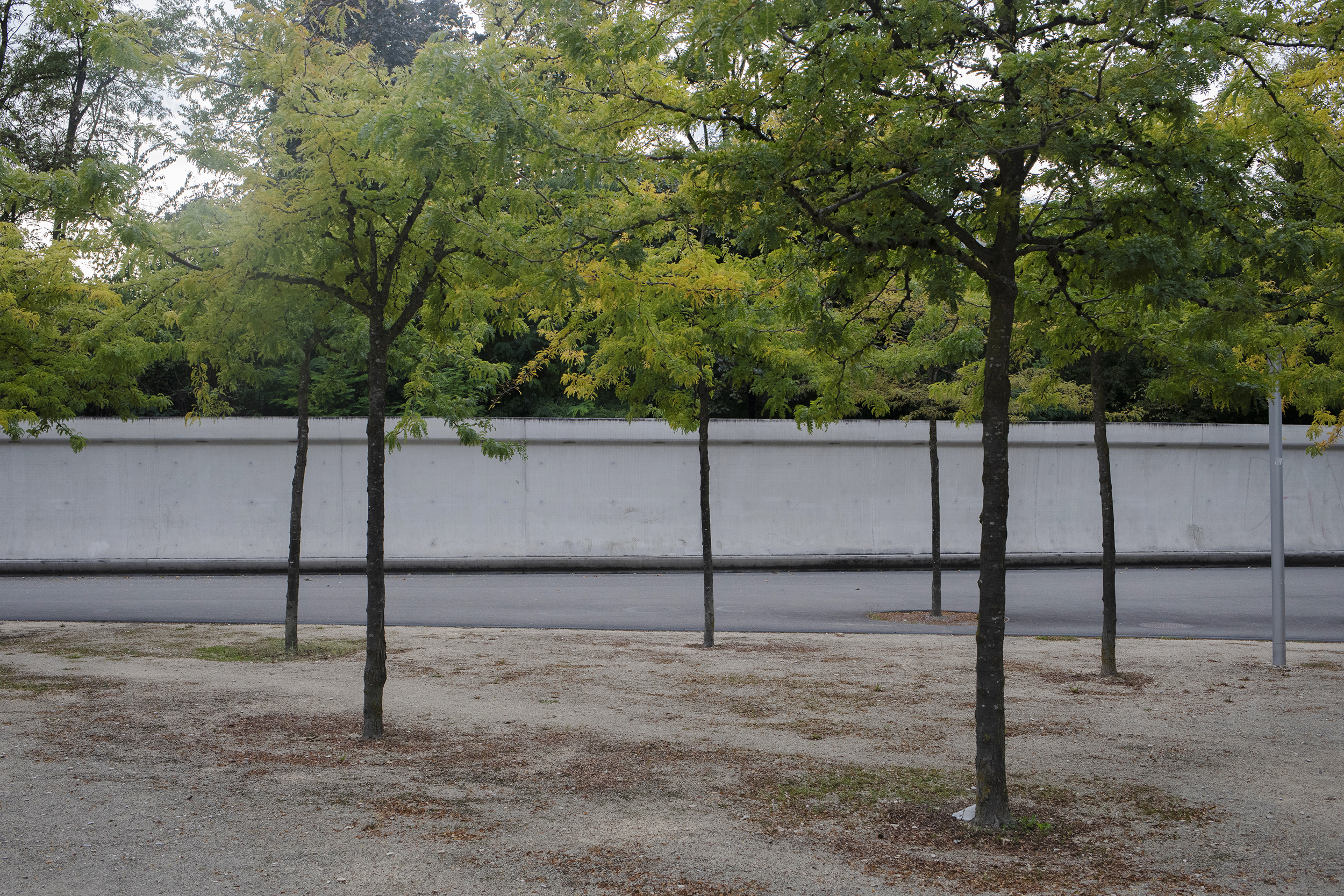
In the afternoon, we are heading to the outskirts of Zurich, or more precisely, to an area commonly referred to as Zurich North. Geographically, this part of town is embedded into a landscape of gently rolling hills close to the airport, but despite its location, the urban fabric doesn’t really fade out here. We are looking in vain for any familiar tropes of suburbia, neither do we find an industrial no-man’s-land made up of factories, warehouses and brothels. This part of the city is quite something else.
It might be described more accurately as a hybrid landscape, where the histories of former marshlands and agricultural spaces collapse with post-industrial zones, sustainable housing experiments and hypermodern office parks. For a few hours, we walk along some of those non-linear routes of hybridity, encountering their spatial orders and trying to sense their compositions. Step by step, we explore an ensemble of endless possibilities and interdictions that reinvents itself – an urban universe that is constantly exploding.
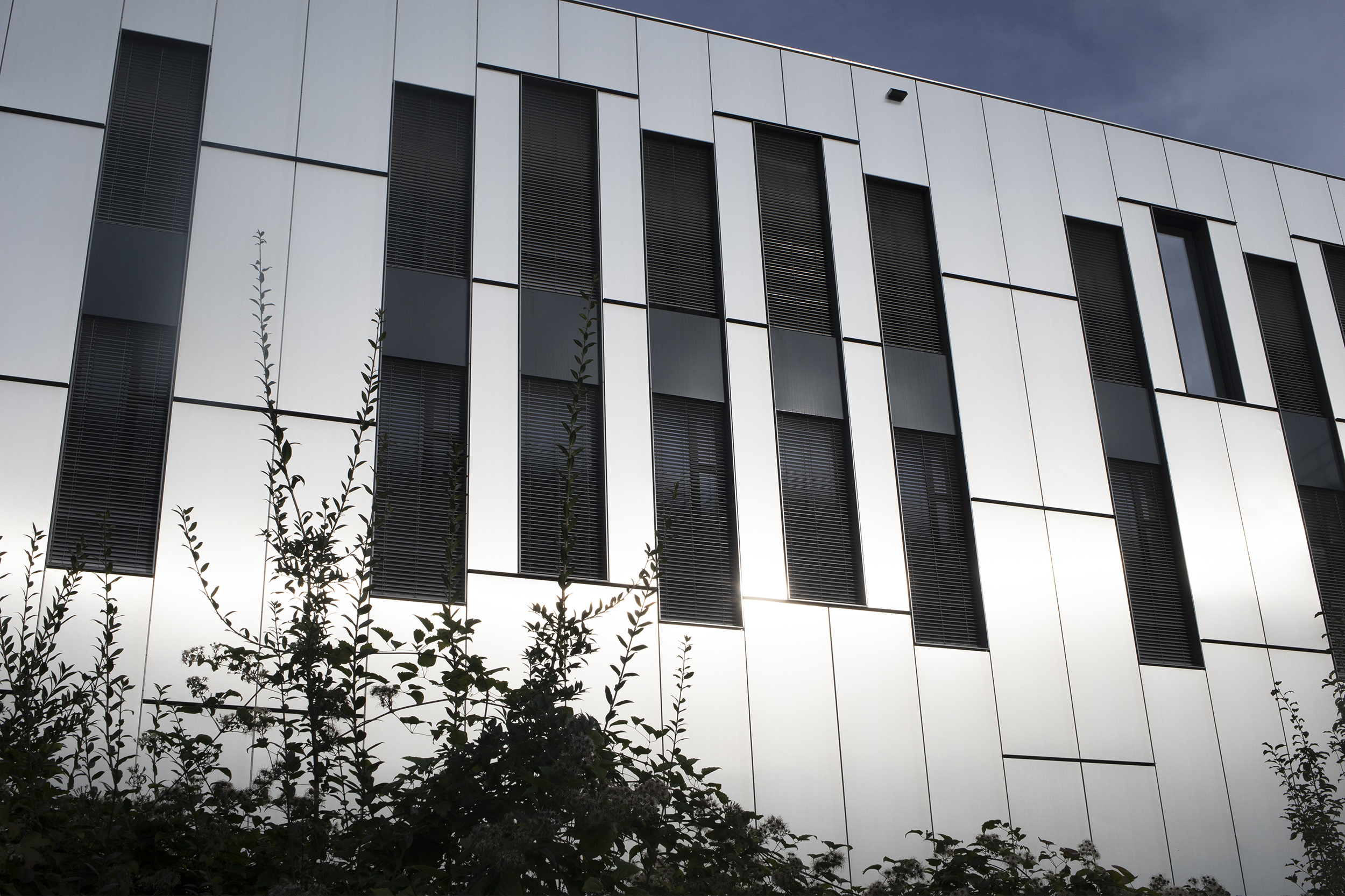
We catch the first glimpse of this hybridity right after hopping off bus number 781 at Genossenschaftsstrasse, where we are greeted by a column of heavy smoke rising to the sky. The grey clouds are emitted by a mighty concrete chimney, which forms the gravitational centre of the incinerator Hagenholz. At this place, Zurich residents can dispose up to 400kg of waste a year
using a set of
municipal vouchers
every household receives. Once dumped at the site, couches, washing machines and building rubble are grabbed by two huge cranes, heaved into a voluminous oven and incinerated in the Hagenholz hellfire at 1000°C.
Behind its sober and reflective metallic façade, private information of citizens is collected and stored. Deep inside, flickering servers are busy undertaking energy-intensive calculations that heat up microchips and produce a constant low-humming noise. Confusingly, this is the sound of sustainability – at least for the residents next door – as the data-driven heat is directly transferred to their housing complex in order to warm up their radiators. Initially, these heaters should have been fed by the heat from the Hagenholz incinerator too, but it turned out that its high temperatures would have destroyed the fragile Minergie-heating system of the housing complex.
Apparently, the flows of energy entering and leaving Zurich North are not only efficiently controlled, but also creatively repurposed. This choreographed relationship reminds one of Keller Easterling’s notion of the “power of infrastructure space”, which she describes as “a form, but not like a building is a form; … [rather like] … an updating platform (…), encoding the relationships between buildings, or dictating logistics.”1 Seen through this lens, the flows of information and energy that run through incinerators, data centres and residential homes in Zurich North are not only smartly organized, but also constitute a source of power. And while we know that this power exists, we are not sure yet who holds its reins.
And some of them, like the Swiss Broadcasting Corporation (SRG) building, even allow us to sense the potential struggles that come along with them. When the SRG built their major studio in Zurich North in 1955, it started construction work on top of a marshland area. Successively, the presence of the state-owned broadcasting company heralded a transformation: economically inefficient swamps were drained and covered by concrete, the service sector grew on top of this much more stable ground, replaced agricultural and blue-collar work, and attracted new residents in return.
Fast-forward to today, we encounter an extensive empty property in front of the SRG. The space looks like a wasteland and is bounded by a tight fence protecting a huge area of nothingness inside. Spread throughout this wasteland, we detect a couple of fragile metal structures whose red and white frames stretch towards the sky, while dots of small concrete barriers are stand idly by.
An interesting side note to this story is worth considering: In 2019, the city aimed to buy the property for 40 million Francs from the SRG. Local politicians were keen to designate the space for kindergartens, schools and social housing in order to mitigate the effects of a rapidly gentrifying neighbourhood. However, Swiss multi-billion insurance company Swiss Life had other plans. By bidding 81 million, they made the deal. Likely yet another glass tower will emerge here, joining the ranks of other buildings in close proximity constructed by multinational corporations such as the “Quadro Towers”, the “Sunrise Tower”, or the Axa “MainTower”.
The 250.000 tons of waste that are burned here annually contribute a great deal of heat and electricity to the city’s energy supply. Quite likely, part of this heat is also used right next door, where the municipality operates a data centre.
Behind its sober and reflective metallic façade, private information of citizens is collected and stored. Deep inside, flickering servers are busy undertaking energy-intensive calculations that heat up microchips and produce a constant low-humming noise. Confusingly, this is the sound of sustainability – at least for the residents next door – as the data-driven heat is directly transferred to their housing complex in order to warm up their radiators. Initially, these heaters should have been fed by the heat from the Hagenholz incinerator too, but it turned out that its high temperatures would have destroyed the fragile Minergie-heating system of the housing complex.
Apparently, the flows of energy entering and leaving Zurich North are not only efficiently controlled, but also creatively repurposed. This choreographed relationship reminds one of Keller Easterling’s notion of the “power of infrastructure space”, which she describes as “a form, but not like a building is a form; … [rather like] … an updating platform (…), encoding the relationships between buildings, or dictating logistics.”1 Seen through this lens, the flows of information and energy that run through incinerators, data centres and residential homes in Zurich North are not only smartly organized, but also constitute a source of power. And while we know that this power exists, we are not sure yet who holds its reins.
We keep walking. On our way, we are looking behind bushes and buildings, listening to the sounds of engineered rivers and admiring garden views that cause neck-pain since these gardens are constructed vertically. With every step, we discover more of those curious hybrids.
And some of them, like the Swiss Broadcasting Corporation (SRG) building, even allow us to sense the potential struggles that come along with them. When the SRG built their major studio in Zurich North in 1955, it started construction work on top of a marshland area. Successively, the presence of the state-owned broadcasting company heralded a transformation: economically inefficient swamps were drained and covered by concrete, the service sector grew on top of this much more stable ground, replaced agricultural and blue-collar work, and attracted new residents in return.
Fast-forward to today, we encounter an extensive empty property in front of the SRG. The space looks like a wasteland and is bounded by a tight fence protecting a huge area of nothingness inside. Spread throughout this wasteland, we detect a couple of fragile metal structures whose red and white frames stretch towards the sky, while dots of small concrete barriers are stand idly by.
Maybe you would not expect it, but the fenced area in front of us is one of Zurich’s most high-priced real-estate spaces. The urban development processes of the last decades left their mark: One square meter costs more than 12.000 Francs–which is not bad for a former swamp.
An interesting side note to this story is worth considering: In 2019, the city aimed to buy the property for 40 million Francs from the SRG. Local politicians were keen to designate the space for kindergartens, schools and social housing in order to mitigate the effects of a rapidly gentrifying neighbourhood. However, Swiss multi-billion insurance company Swiss Life had other plans. By bidding 81 million, they made the deal. Likely yet another glass tower will emerge here, joining the ranks of other buildings in close proximity constructed by multinational corporations such as the “Quadro Towers”, the “Sunrise Tower”, or the Axa “MainTower”.

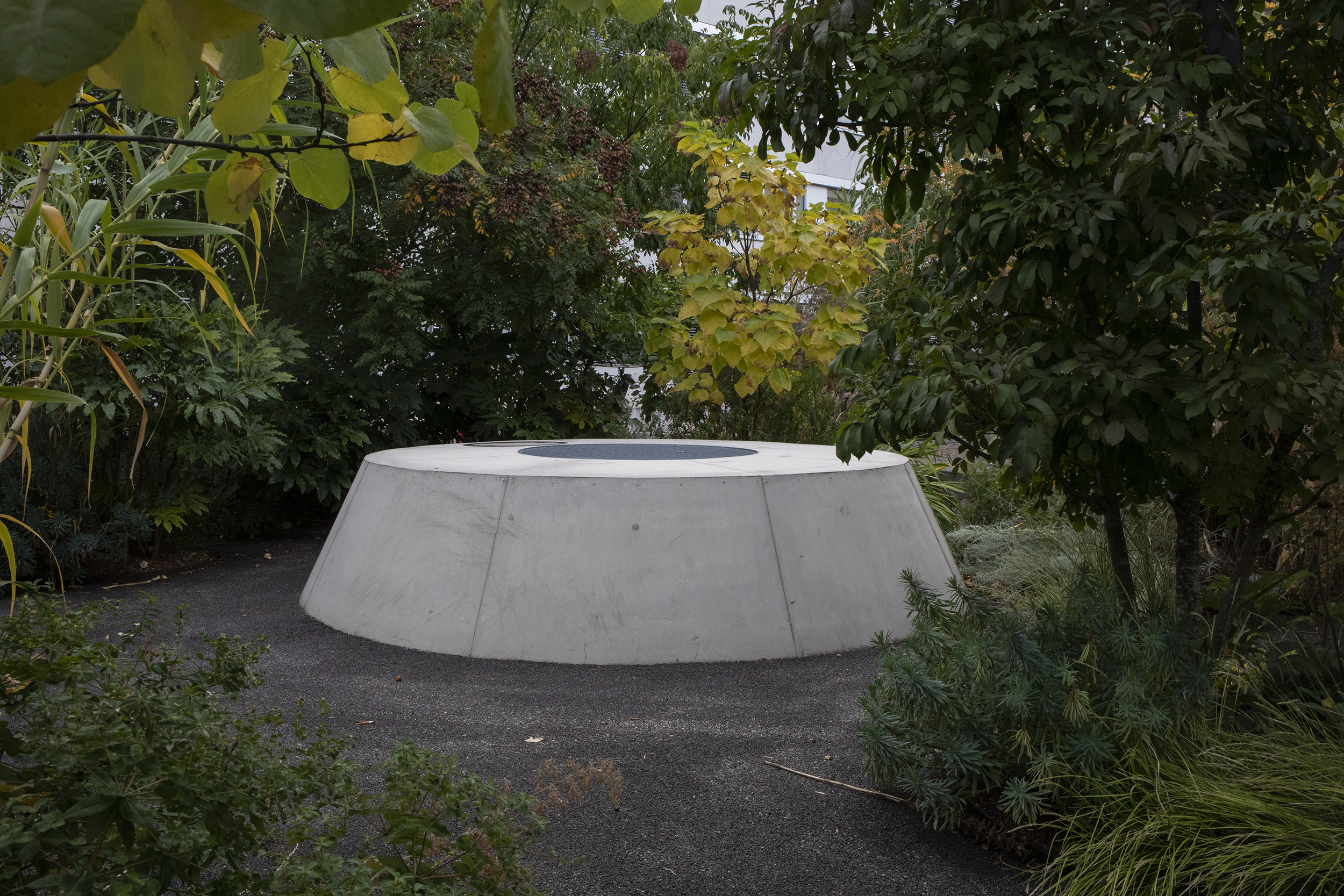
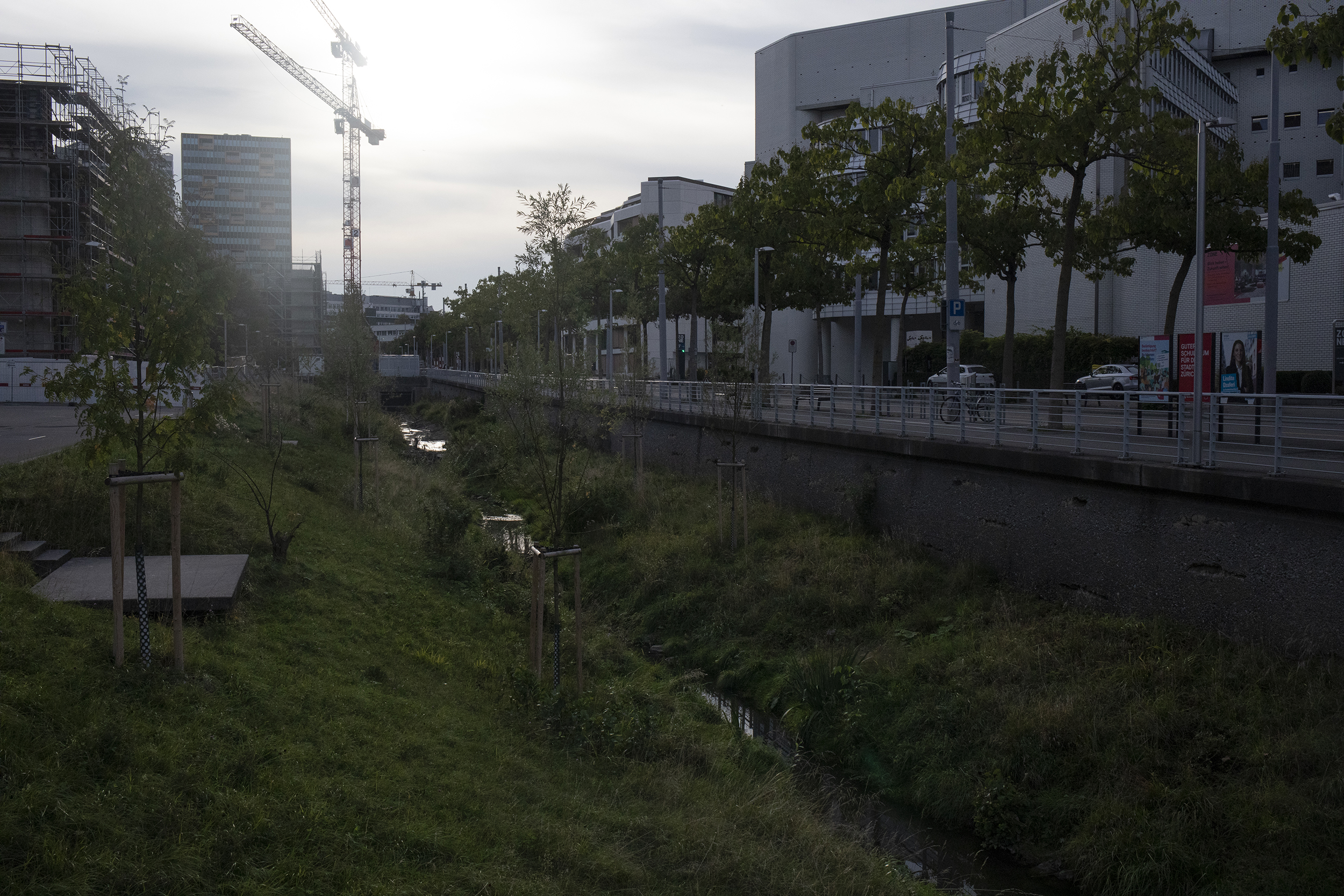
Next, we walk along the rerouted river Leutschenbach, which guides us toward a couple of eye-opening encounters with some peculiar trees. The first one – at the large and hyper-regular lawns of Opfikerpark – starts with not seeing any at all. Although the expanse of the lawn is huge, we cannot find any shade-giving crowns that would protect people, animals or plants from the intense summer sun. Why did nobody plant any trees here, especially after a few citizens campaigned for it? The simple answer is that it did not match the vision of its creators. The landscape architects would not allow
their clean, abstract
and modernist park design
to be disrupted.
As it seems, hybridity (and habitability) in Zurich North is only permitted if it sticks to very particular agendas of aesthetics and control. Everything else is considered chaos, or simply bad design.
While this rather puzzling insight still floats around our heads, we are already heading towards another odd tree only a couple of hundred meters away. Right next to a tall concrete building in a quiet, rather monotonous street, we see its body, somehow abandoned and out of balance, for it has used only one-half of its trunk to grow branches. The other, naked side, has been blocked by the walls of the massive building, hindering its body from growing to its full potential. Apparently, a common urban phenomenon.
Only a couple of metres further, we approach a footpath, where a straight line of trees emits an otherworldly glow of light. We need a few moments to realize: the trunks are not glowing, they are painted white. The municipality applied a chalk layer on top of their bark to protect the trunks from direct sunlight. This is necessary because Zurich North provides very different living conditions than the environment where these young trees usually grow up. The clean urban space lacks the small plants and bushes that would mitigate intense sunlight and rapid shifts in temperature. Hence, without the white chalk layer on top of their bodies, the trees would suffer, crack and fracture. And of course, their wounds would also create additional botanical work or spoil the greening investment all together.
Maybe it’s a naïve insight, but one cannot help but think that trees’ growth in Zurich North is determined less by sun, soil and wind but much more by the forces of urban planning and city marketing.
As it seems, hybridity (and habitability) in Zurich North is only permitted if it sticks to very particular agendas of aesthetics and control. Everything else is considered chaos, or simply bad design.
While this rather puzzling insight still floats around our heads, we are already heading towards another odd tree only a couple of hundred meters away. Right next to a tall concrete building in a quiet, rather monotonous street, we see its body, somehow abandoned and out of balance, for it has used only one-half of its trunk to grow branches. The other, naked side, has been blocked by the walls of the massive building, hindering its body from growing to its full potential. Apparently, a common urban phenomenon.
Only a couple of metres further, we approach a footpath, where a straight line of trees emits an otherworldly glow of light. We need a few moments to realize: the trunks are not glowing, they are painted white. The municipality applied a chalk layer on top of their bark to protect the trunks from direct sunlight. This is necessary because Zurich North provides very different living conditions than the environment where these young trees usually grow up. The clean urban space lacks the small plants and bushes that would mitigate intense sunlight and rapid shifts in temperature. Hence, without the white chalk layer on top of their bodies, the trees would suffer, crack and fracture. And of course, their wounds would also create additional botanical work or spoil the greening investment all together.
Maybe it’s a naïve insight, but one cannot help but think that trees’ growth in Zurich North is determined less by sun, soil and wind but much more by the forces of urban planning and city marketing.

We leave the glowing trees behind and want to move on, but only after a couple of steps do we find ourselves in another confusing space that attracts our attention. In between a major street and a housing complex, we stand in the middle of a local recreational area called Leutschenpark. Its aesthetics of geometric concrete structures and grid-guided tree formations remind one of the architectural 3D-renderings turned real. Nevertheless, in the
park’s center, we
discover a few taller, we discover a few taller, and potentially older trees silhouetted against the sky. Indeed, we only see their top parts as their bottom part lies hidden behind a three-meter-high wall, which appears rock-solid and insurmountable. Fascinated by this strange sculpture, we move closer to touch the naked and cool concrete. Absorbing its absolute opaqueness, we circuit the wall, only to realize that the enclosure does not provide any official entrance, not even a locked door. The trees are entirely encased. Now, what is this? A monument? A land art piece? A secret, small-scale attempt at rewilding?
It’s something else. The hidden group of trees is part of the former shooting range Buel-Seebach. More precisely, the encapsulated small hill formed the so-called bullet trap of the sight, which was placed directly behind the shooting targets to stop the projectiles and prevent stray shots.
Today, the wall in the centre of Leutschenpark is the consequence of ten thousand of projectiles full of toxic metals that were caught and kept by the bullet trap over decades. Its soil is highly contaminated (especially with led) and in order to avoid dispersion and contact with visitors, the small hill was simply put behind a thick concrete barrier in 2008, when the space was turned from an industrial zone into a public park. Notably, the city should have sanitized the facility back then, removed the soil, extracted its toxic components, and deposited it adequately. Yet these remediation efforts would have been too expensive and too slow – within the rush of “developing” the area for investors and white-collar workers, that’s why local politicians, engineers and landscape architects came up with the ingenious idea of sealing the bullet trap.
Obviously, this concrete quarantine is only a dubious short term-solution with many question marks. Eventually (and according to current environmental law), the toxic soil has to be removed if the park is going to be restructured or turned into something else in the future. Until then, geoscientists and politicians involved in the Leutschenpark project say, that the sight is closed and safe. Yet one could argue that by today, the violent force of impacting bullets has not vanished, but contained and transformed for a slow process of degrading toxic projectiles; a process much less visible, less fast, less immediate, but nevertheless, potentially harmful.
Indeed, sometimes it might take years or even decades until corrosion dissolves the exterior layer of bullets, allowing small amounts of toxic metals to enter soil and water. Equally, it can take decades or even generations until led intoxication takes its toll on human and non-human bodies. Obviously, these changes and implications are very tough to track, because their scale and temporality are hard to grasp. However, if we consider the 2.500 active and 1.500 inactive shooting ranges that exist in Switzerland – as well as the thousands of tons of led and other toxic metals that are buried in their bodies – one has to wonder if we can afford to neglect such violence, even if it acts in slow-motion.
It’s something else. The hidden group of trees is part of the former shooting range Buel-Seebach. More precisely, the encapsulated small hill formed the so-called bullet trap of the sight, which was placed directly behind the shooting targets to stop the projectiles and prevent stray shots.
However, a bullet trap doesn’t only stop bullets right after a shot is fired and goes through a target; it also literally traps them, burying them for long periods of time within its earth mass, thereby absorbing their highly toxic metals.
Today, the wall in the centre of Leutschenpark is the consequence of ten thousand of projectiles full of toxic metals that were caught and kept by the bullet trap over decades. Its soil is highly contaminated (especially with led) and in order to avoid dispersion and contact with visitors, the small hill was simply put behind a thick concrete barrier in 2008, when the space was turned from an industrial zone into a public park. Notably, the city should have sanitized the facility back then, removed the soil, extracted its toxic components, and deposited it adequately. Yet these remediation efforts would have been too expensive and too slow – within the rush of “developing” the area for investors and white-collar workers, that’s why local politicians, engineers and landscape architects came up with the ingenious idea of sealing the bullet trap.
Obviously, this concrete quarantine is only a dubious short term-solution with many question marks. Eventually (and according to current environmental law), the toxic soil has to be removed if the park is going to be restructured or turned into something else in the future. Until then, geoscientists and politicians involved in the Leutschenpark project say, that the sight is closed and safe. Yet one could argue that by today, the violent force of impacting bullets has not vanished, but contained and transformed for a slow process of degrading toxic projectiles; a process much less visible, less fast, less immediate, but nevertheless, potentially harmful.
Thus, we might consider this current violence of the inoperative bullet trap a form of slow violence, a term coined by Rob Nixon in 2011, that describes “a violence that occurs gradually and out of sight, a violence of delayed destruction that is dispersed across time and space, an attritional violence that is typically not viewed as violence at all.”2
Indeed, sometimes it might take years or even decades until corrosion dissolves the exterior layer of bullets, allowing small amounts of toxic metals to enter soil and water. Equally, it can take decades or even generations until led intoxication takes its toll on human and non-human bodies. Obviously, these changes and implications are very tough to track, because their scale and temporality are hard to grasp. However, if we consider the 2.500 active and 1.500 inactive shooting ranges that exist in Switzerland – as well as the thousands of tons of led and other toxic metals that are buried in their bodies – one has to wonder if we can afford to neglect such violence, even if it acts in slow-motion.

Shortly after we left the park and jumped into the newly built Glattalbahn tram, dusk was breaking. We are on our way to dinner, happy to fill our bellies after a long day of walking. Meanwhile, the hybrid beings of Zurich North keep evolving under a darkening sky. Different rhythms of growth, decay and hope, investment and engineering, keep overlapping and intermingling, endlessly re-formatting this complicated space. Once the sky darkens and we are finally gone, the Leutschenpark area will be illuminated. Of course, not by ordinary street lights, but by an art installation that baths the concrete barriers, plants and passer-by’s in a blaze of blue light. Welcome to the future, it seems to say.
